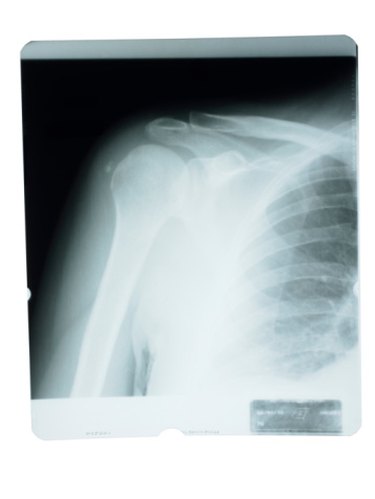
Hyperextension of the shoulder involves the rotator cuff muscles and the shoulder joint, also known as the glenohumeral joint. Muscles that are part of the rotator cuff muscle group include supraspinatus, infraspinatus, teres minor and subscapularis, and these muscles help support the shoulder during rotation of the joint. Of these muscles, the first two are the most likely to be injured in hyperextension of the shoulder.
Causes
Video of the Day
Hyperextension of the shoulder is caused by an over-rotation of the shoulder. This is common in certain types of work and sports in which rotation of the shoulder is necessary. Sports that require such a motion include bowling, cricket, swimming, kayaking, and pitching in baseball. Injuries can include tears of the muscles and tendons and inflammation of the tendons.
Video of the Day
Symptoms
There are two levels of shoulder injury with hyperextension: acute and chronic. When the acute injury first occurs, there is a sudden pain when the tearing happens. For a number of days there is limited movement of the shoulder and severe pain. The point over the injury is especially tender and if the injury is severe you will not be able to raise your arm to the side. A chronic injury generally develops on the dominant side and develops over time. This is commonly seen in people over the age of 40 and can be particularly troublesome at night. The pain and limited range of motion gets continuously worse over time until you can no longer raise your arm to the side. Other movements may also be limited.
Diagnosis
To diagnose hyperextension of the shoulder, the doctor first takes a medical history, a history of injury and details about the current injury. An examination of both shoulders follows, with the doctor using both visual means and palpation, and the wrist, neck, and elbows are checked as well. The doctor checks both active and passive range of motion, and strength and sensation is also be assessed. Finally, the doctor will run tests to determine the exact location and nature of the injury.
Treatment
If your injury is acute, treatment consists of rest and ice to control the pain and swelling. Medication may also be required. Imaging tests might be done to rule out any fractures. Physiotherapy is usually required for rehabilitation. If the injury is severe and you meet certain other criteria, surgery may be an option. This will happen if you are younger than 60 and if there are complete tears, if you are not responding to other treatments, you are a professional or dedicated athlete, or your job requires you to use your shoulder. For a chronic condition, you may need ice or alternating heat and ice along with medication to control pain. Injection of steroid medication may be required. A physiotherapist will give you exercises, and if you meet the criteria given for acute injuries, surgery may be an option.
Is this an emergency? If you are experiencing serious medical symptoms, please see the National Library of Medicine’s list of signs you need emergency medical attention or call 911.